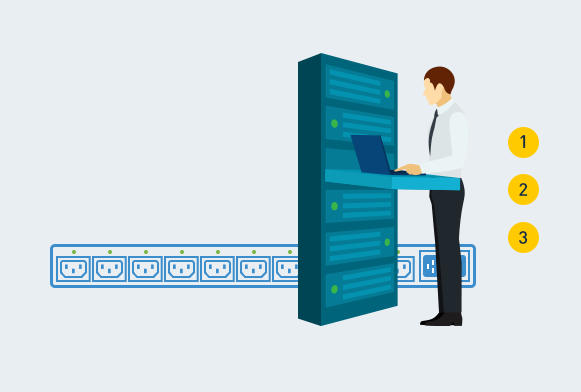Customizable Activation Sequence and Delay of Outlets to Initiate Service Correctly and Eliminate Inrush Currents
When server equipment is used, there are two common, widespread problems that require attention to the sequencing of the equipment’s activation and service restoration after a complete power loss.

Problem 1:
Combined inrush currents can exceed the maximum current of the installed UPS on small hubs using low-capacity UPS, when an attempt is made to turn on the entire equipment all at once after an outage. As a result, the UPS will switch over to overload mode, and the device will simply not turn on.
Problem 2:
When turning on servers of information systems before infrastructure services (like a network, DHCP, DNS, NTP, AD) launch and start working, the servers of information systems can remain in an error status and in wait for manual intervention for them to be launched properly.
When using RPCM, system admins can essentially guarantee an equipment is turned on after a complete outage. Also, they can define the activation sequence and delay, when turning on the equipment after a complete outage, which allows them to launch the IT infrastructure and information systems in a proper manner.

International
Azerbaijan
Belarus
Kazakhstan
Uzbekistan